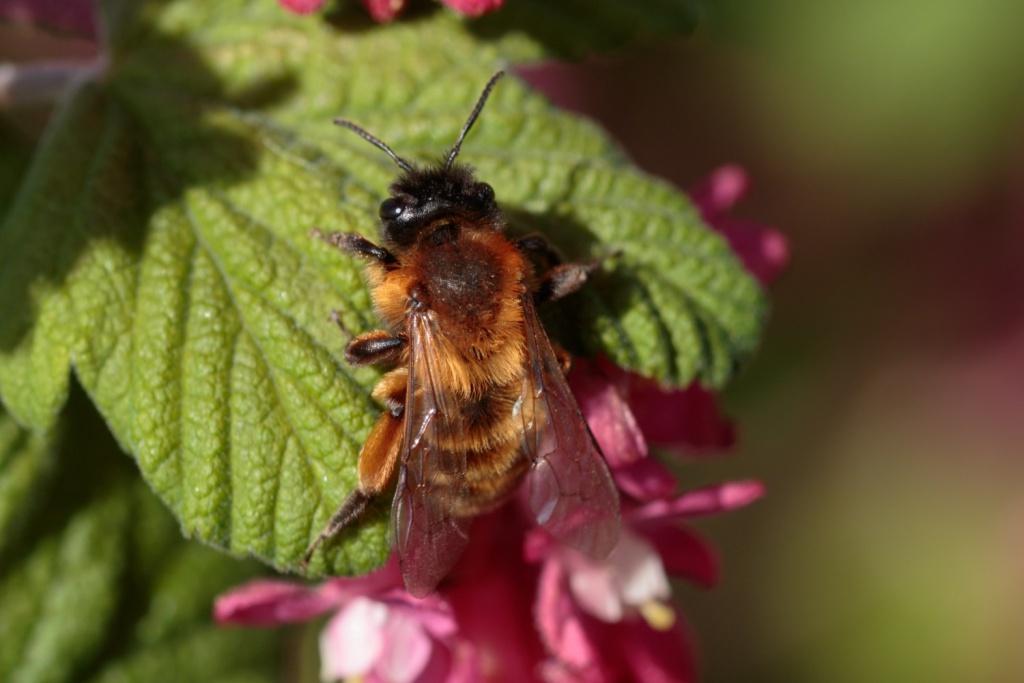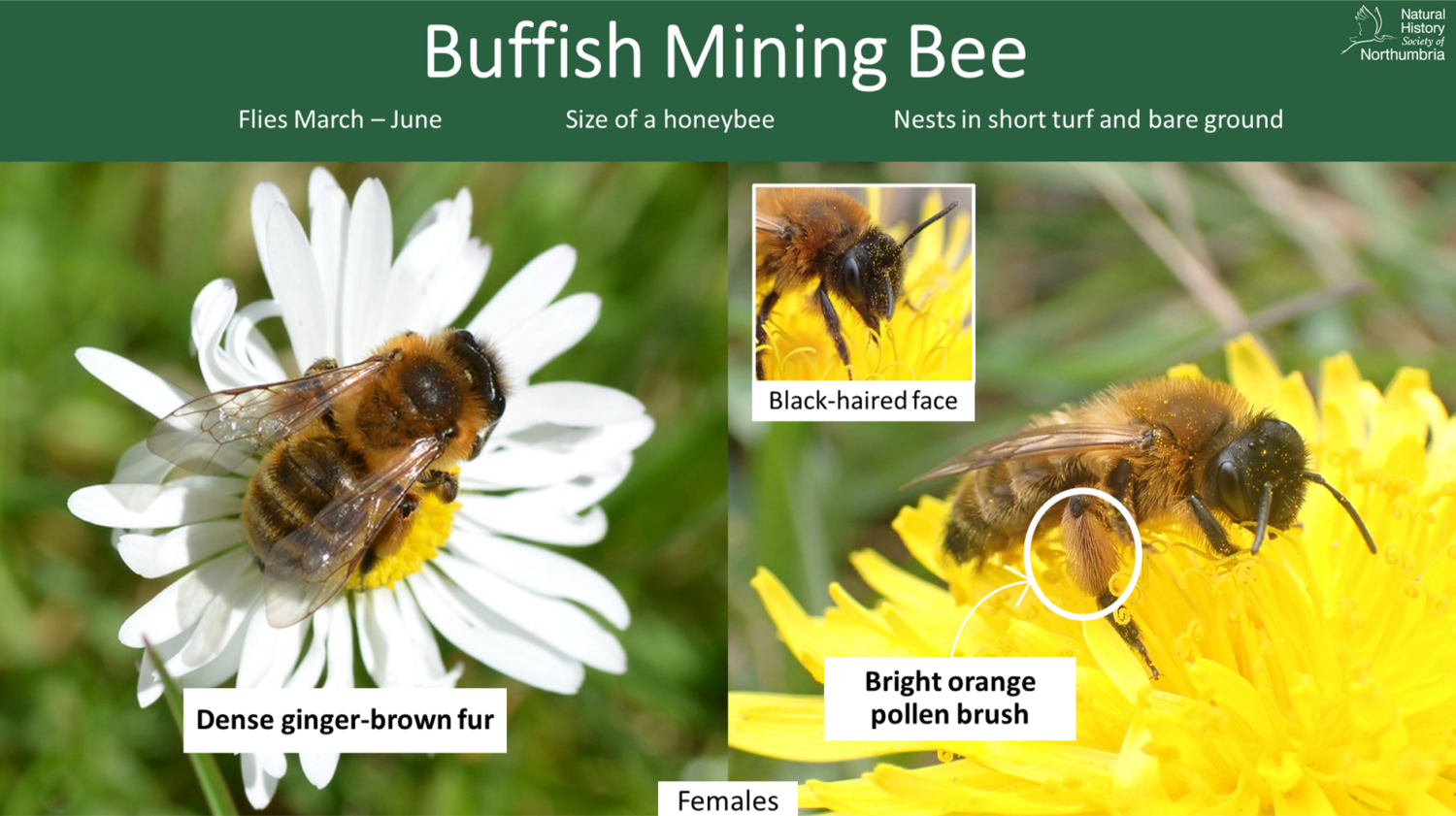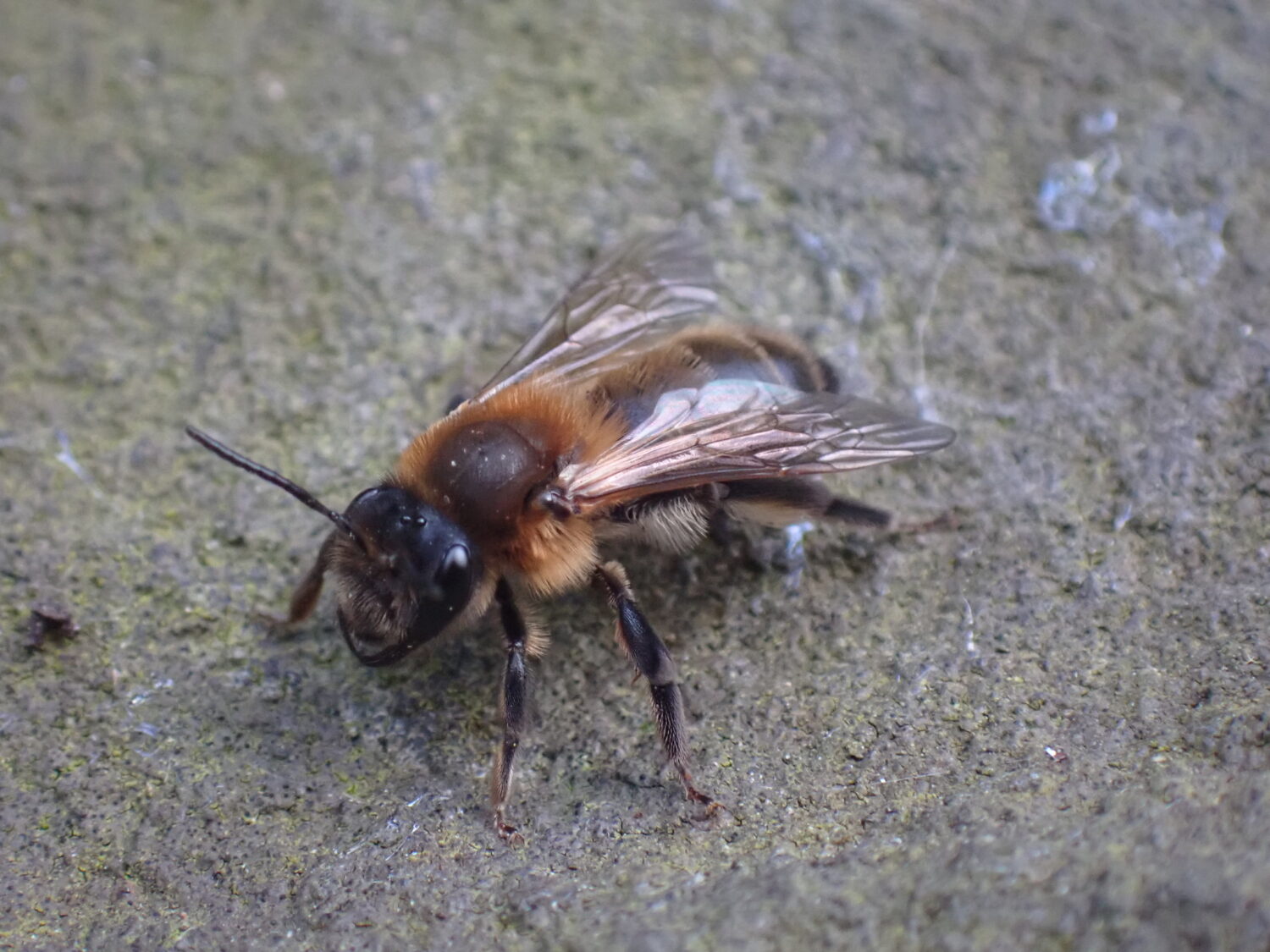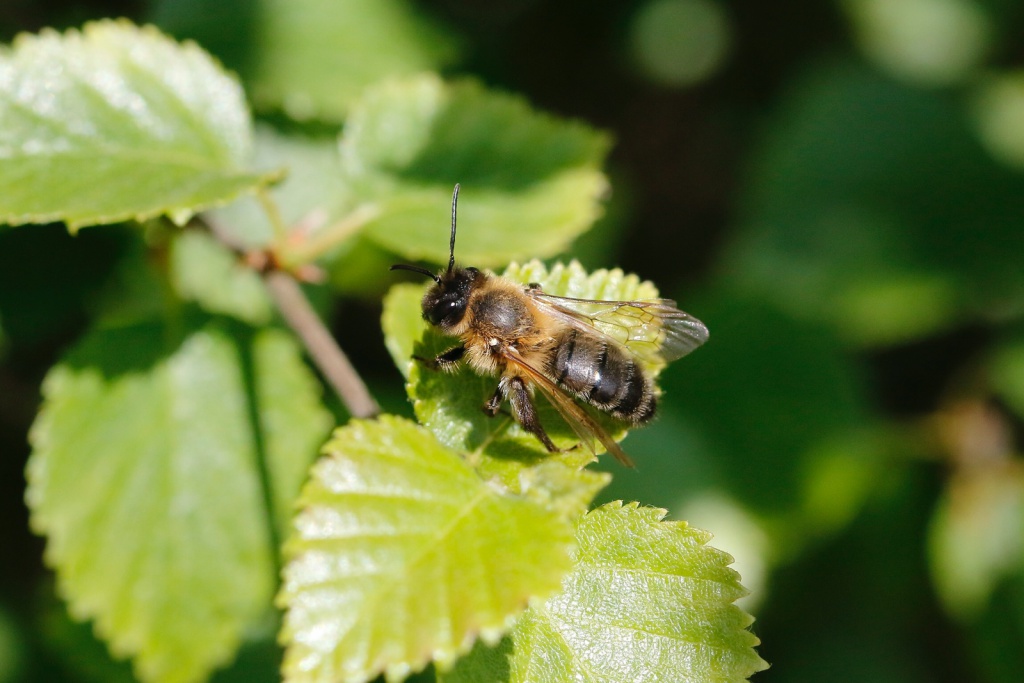A species of mining bee, the Buffish Mining Bee is a spring-flying bee that nests in bare ground and short turf.
Fast facts
- Common name(s)
- Buffish Mining Bee
- Scientific name
- Andrena nigroaenea
- Bee group
- A species of mining bee, from the genus Andrena
- When to see it
- April – June
Description
A spring-flying mining bee, the Buffish Mining Bee is one of the first solitary bees to be seen in the year. With a dense ginger coat and orange pollen brush, it is one of the more distinctive solitary bees to look out for.
Identification
Females
Females are honeybee-sized, with a dense ginger-brown or ‘buffish’ coat. Used to collect pollen, a key identification feature is the bright orange brush of hairs on the hind legs. The face is black-haired.
Males are less distinctive, but resemble smaller and slimmer females without the orange pollen brush.
Similar species
When the hind legs are covered in pollen, female Buffish Mining Bees look similar to female Chocolate Mining Bees. However, female Chocolate Mining Bees have a black and white pollen brush. When taking photographs, it is useful to capture the hind legs to aid identification.
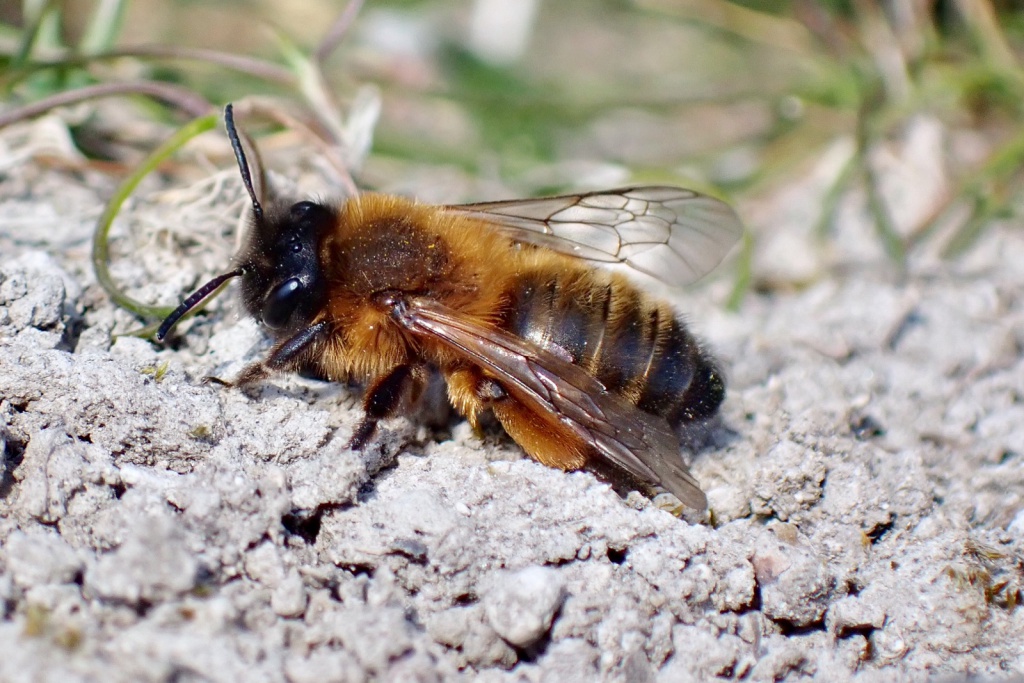
Spotted this bee?
Share your sighting to the North East Bee Hunt and contribute to the conservation and study of our region’s bees.
Ecology
Nesting in bare ground and short turf, females often nest close together in aggregations. Estimated to support over 100,000 bees, the nesting aggregation at the Spetchells in Prudhoe is considered the largest known aggregation of this species.
Regional distribution
Nationally, the Buffish Mining Bee is one of our most common and widespread mining bees. Occurring in a wide variety of habitats, you can encounter this mining bee in both Northumberland and County Durham.
